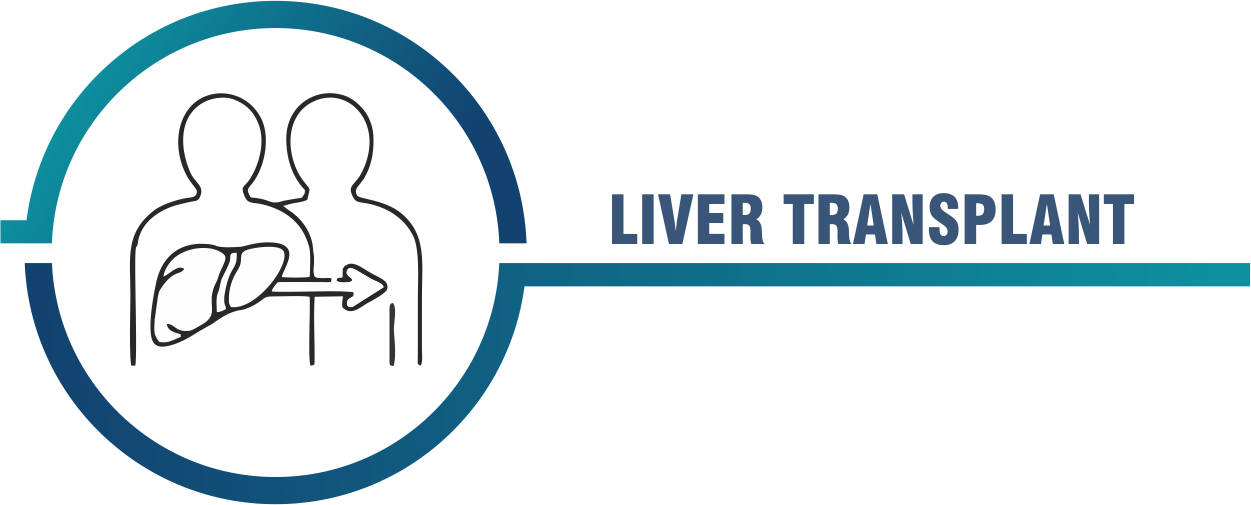
About Liver Transplant
A Liver Transplant is a surgical procedure where a healthy liver from a deceased donor or a piece of a healthy liver from a living donor is removed from a patient's failing liver and is replaced. The prospect of a liver transplant is typically only considered as a treatment for those with severe difficulties brought on by end-stage chronic liver disease. In rare circumstances where a previously healthy liver suddenly fails, liver transplantation may also be an option for treatment.
Types of Liver Transplant:
Transplant from a deceased donor
- If the patient is brain dead, he is considered to be dead and is receiving a liver transplant.
- The liver has been transplanted into the necessary person on the waiting list after fitting the deceased person's blood type and measurements.
- Since the liver has the ability to regenerate, it is periodically split into two halves and transplanted simultaneously into two patients—a child and an adult.
Living Donor Transplant
- A living donor transplant occurs when a portion of a healthy liver is substituted for a damaged liver.
- A direct relative, such as parents, grandparents, children, grandchildren, or a spouse, must be the donor.
- When the liver is divided or transplanted, the process of the liver growing back to its normal size starts.
- Their entire liver needs two to three weeks to fully regenerate.
Symptoms
When a candidate has one of the following liver conditions:
- Hepatitis B.
- Hepatitis C.
- Alcoholic liver disease.
- Fatty liver disorder or Non-alcoholic steatohepatitis.
- Autoimmune hepatitis.
- Wilson’s disease.
- Formerly failed liver transplant.
- Polycystic disease.
- Hemochromatosis.
- Liver Cancers.
- Primary biliary cirrhosis.
- Acute liver disease.
Risk Factor
The following are some risks related to the procedure:
- Bile duct complications, including bile duct leaks or shrinking of the bile ducts .
- Bleeding.
- Blood clots.
- Failure of the donated liver.
- Infection.
- Rejection of the donated liver.
- Mental confusion or seizures.
Investigations
A patient has a full medical evaluation and a series of tests before having a liver transplant. These tests are performed to assess the patient's level of fitness, look for underlying illnesses that can affect the transplant's success, and assess the patient's capacity for recovery.
The patient's suitability as a candidate for the liver transplant operation is subsequently determined by the liver transplant team.
The following are a few of the tests carried out for this evaluation:
- Computed tomography – takes images of shape and size of the liver
- Doppler ultrasound to check the liver’s ability to exchange carbon dioxide and oxygen
- Stress testing and Echocardiogram
- Test pulmonary functions
- Blood tests for determining clotting ability, blood type and liver function.
Additional testing can be needed if a specific issue surfaces during the assessment.
Along with these exams, visits with social workers, psychological assessments, and family counseling are also conducted.
| Procedure | India | Turkey | Dubai |
| (Price in USD) | (Price in USD) | (Price in USD) | |
| Liver Transplant | 28000-31000 | 60000 | - |
| Liver Cirrhosis Treatment | 2000 | 50000 | - |
| Hepatitis B Treatment | 700 | - | - |
| Pediatric Liver Transplant Surgery (living Donor) | 30000 | 70000 | - |
Note : This is an approximate cost and may vary depending on various condition of the patient health after physical evaluation.
Treatment Options
Side Effects
You will need drugs for the rest of your life after a liver transplant to help prevent your body from rejecting the donor liver. Among the negative effects of these anti-rejection drugs are the following:
- Bone thinning.
- Diabetes.
- Diarrhea.
- Headaches.
- High blood pressure.
- High cholesterol.
Benefits
Success Rate
The circumstances of your case will determine your chances of a successful liver transplant and long-term survival.
Approximately 75% of patients who have a liver transplant survive for at least five years on average.
